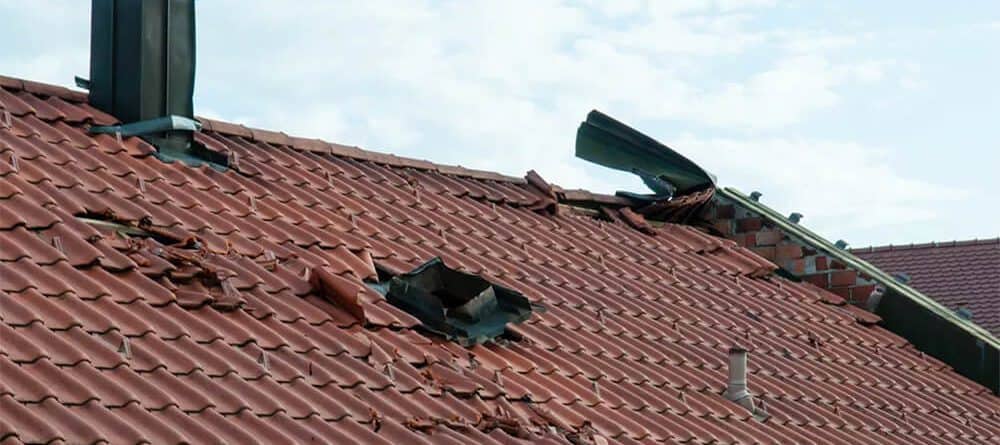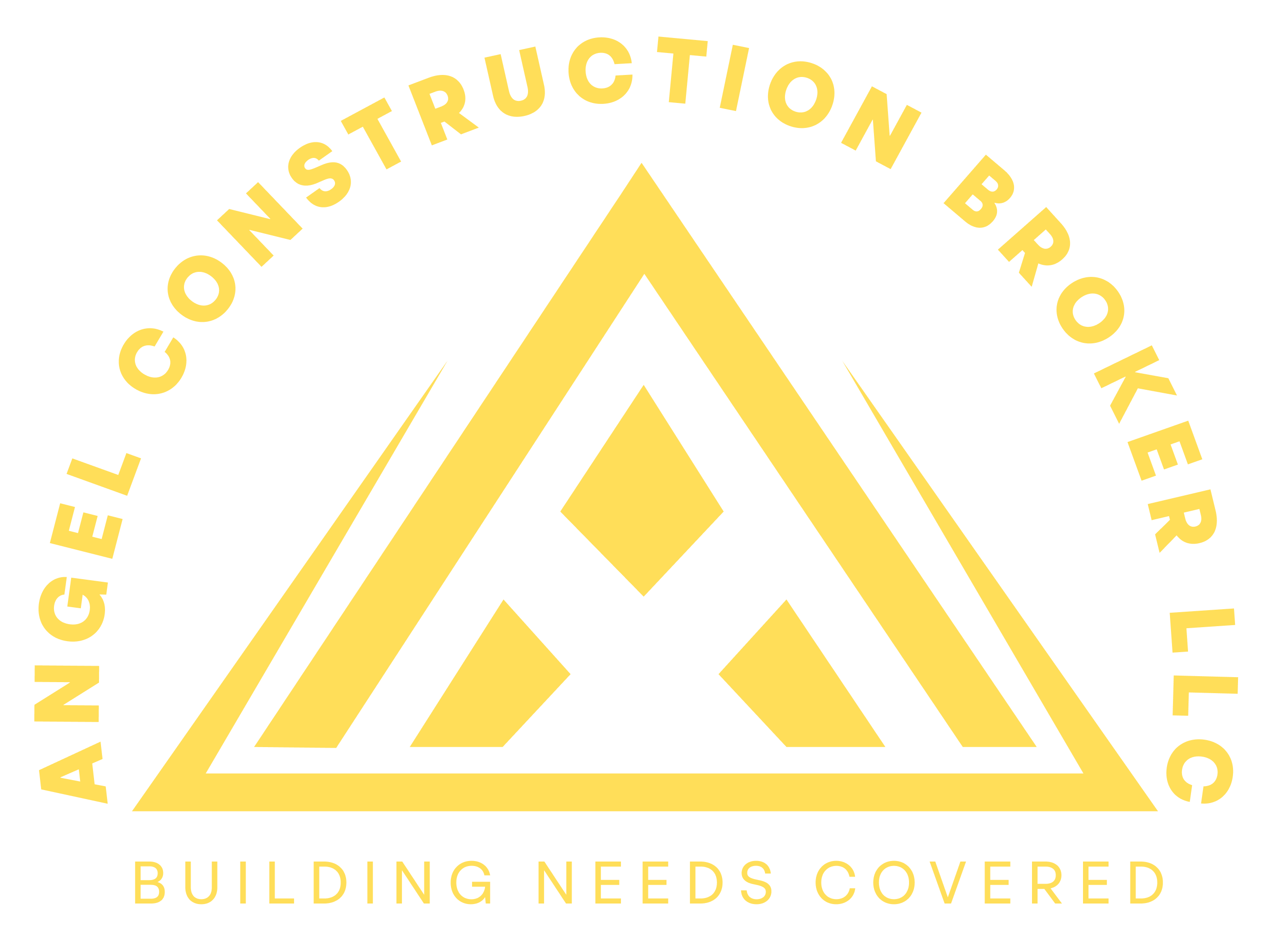Roof damage in Hoover, Alabama, can stem from various factors that homeowners should be aware of to protect their properties effectively. The region’s climate, which includes occasional severe storms and high humidity levels, plays a significant role in roof wear and tear. Heavy rainfall, windstorms, and hail are common culprits, causing shingle damage, leaks, and even structural issues over time. In this guide, Angel Construction Broker LLC helps to discover that proper maintenance, timely repairs, and choosing durable roofing materials suited to Hoover’s climate are essential steps in safeguarding homes against these prevalent causes of roof damage.
1. Weather Events
In Hoover, Alabama, weather events are among the leading causes of roof damage. The region experiences a variety of weather conditions, each contributing to potential roof issues. Heavy rain is common, and when the rainfall is intense, it can lead to leaks, especially if the roof’s drainage system is inadequate. Water can seep into small cracks and gaps, causing not just roof damage but also structural issues within the home.
Storms are another significant threat to roofs in Hoover. Strong winds can lift and displace shingles, leaving the roof vulnerable to further damage. Hail, often accompanying thunderstorms, can cause immediate and severe damage by denting or puncturing roofing materials. Lightning strikes, while less common, can cause catastrophic damage by igniting fires or creating large holes.
2. Tree Damage
Trees around the home can be both a blessing and a curse. While they provide shade and enhance the property’s aesthetic appeal, they also pose significant risks to the roof. Falling branches are a common cause of roof damage in Hoover, especially during storms or high winds. Overhanging branches that are too close to the roof can break off and cause physical damage, such as punctures or dents.
Even when branches do not fall, leaves and other debris from trees can accumulate on the roof and in gutters. This buildup can clog gutters, leading to water backup and potential leaks. The trapped moisture can cause shingles and other roofing materials to deteriorate more quickly. Regular trimming of overhanging branches and clearing debris from the roof and gutters can help prevent this type of damage.
3. Poor Installation
The quality of roof installation plays a crucial role in its longevity and resistance to damage. Poor installation practices can lead to a variety of problems, making the roof more susceptible to damage from the elements. Incorrect installation of shingles can result in poor sealing, leaving gaps that allow water to penetrate. Improper ventilation can cause heat and moisture buildup in the attic, leading to damage from the inside out.
Additionally, weak structural integrity due to poor installation can make the roof more vulnerable to storms and heavy winds. It is essential to hire experienced and reputable roofing contractors to ensure that the roof is installed correctly. Regular inspections can also help identify any installation-related issues early on, allowing for timely repairs and maintenance.

4. Lack of Maintenance
Neglecting regular roof maintenance is one of the most common causes of roof damage. Many homeowners in Hoover overlook the importance of regular inspections and maintenance, allowing minor issues to go unnoticed and worsen over time. Small cracks, loose shingles, and other minor problems can escalate into significant damage if not addressed promptly.
Additionally, growth of algae and moss is a common issue in humid climates like Hoover’s. These growths can deteriorate roofing materials and retain moisture, leading to leaks and water damage. Regular cleaning and maintenance can prevent the buildup of algae and moss, preserving the roof’s integrity.
Scheduling routine inspections by professional roofers can help identify and address potential problems before they become serious. Simple maintenance tasks like cleaning gutters, removing debris, and checking for loose or damaged shingles can significantly extend the life of the roof.
5. Animals and Pests
Wildlife and pests can cause significant damage to roofs in Hoover. Birds, squirrels, raccoons, and insects often see roofs as potential nesting or burrowing sites. Birds can peck at shingles, causing small holes and damage. Squirrels and raccoons are known for chewing through roofing materials to create entry points into attics, leading to leaks and structural damage.
Insects, such as termites and carpenter ants, can also cause substantial damage by burrowing into wooden structures. These pests can weaken the roof’s structural integrity, leading to significant repair costs. Regular inspections and prompt action at the first sign of wildlife or pest activity can help mitigate this type of damage.
6. Aging
No matter how well a roof is maintained, aging is an inevitable cause of roof damage. Over time, all roofing materials degrade due to constant exposure to the elements. Asphalt shingles, for example, typically have a lifespan of 20 to 30 years, while metal and tile roofs can last longer but still suffer from wear and tear.
As roofs age, they become more susceptible to leaks, cracks, and other forms of damage. Regular inspections can help monitor the roof’s condition and determine when it’s time for repairs or a complete replacement. Investing in quality materials and proper installation can help maximize the roof’s lifespan, but eventually, even the best-maintained roofs will need to be replaced. Being proactive about roof aging can prevent unexpected and costly damages.
7. Ventilation Issues
Proper ventilation is critical for maintaining the health and longevity of a roof. Inadequate ventilation can cause a range of problems, primarily due to the buildup of heat and moisture in the attic. During hot summers in Hoover, an unventilated attic can become extremely hot, causing the roofing materials to expand and contract excessively. This constant movement can lead to cracks and other forms of damage.
Moisture buildup in the attic is another significant issue. When warm, moist air from the home rises into the attic and doesn’t have a way to escape, it can condense on cooler surfaces. This condensation can lead to mold growth and wood rot, compromising the structural integrity of the roof. Ensuring proper ventilation through ridge vents, soffit vents, and attic fans can help prevent these problems.
8. Improper Flashing
Flashing is a vital component of a roof’s defense against water infiltration. It is typically installed around areas where the roof meets vertical surfaces, such as chimneys, skylights, and vent pipes. Improper installation or deterioration of flashing can lead to significant water damage. If the flashing is not properly sealed or becomes corroded over time, water can seep into these vulnerable areas, leading to leaks and potential structural damage.
Regular inspection of flashing, especially after heavy storms, can help identify any issues before they become severe. Re-sealing or replacing damaged flashing can prevent leaks and protect the roof’s overall integrity.
9. Ice Dams

While Hoover doesn’t experience the harsh winters of northern regions, occasional cold snaps can lead to the formation of ice dams. Ice dams occur when melting snow on the roof refreezes at the edges, creating a barrier that prevents proper drainage. The trapped water can then back up under the shingles, leading to leaks and water damage inside the home.
Ensuring adequate insulation and ventilation in the attic can help prevent the formation of ice dams. Properly sealing any gaps that allow warm air to escape into the attic can also reduce the risk of ice dams forming during cold weather.
10. Structural Movement
Over time, the structure of a home can shift or settle, leading to movement that affects the roof. This movement can cause cracks in the roofing materials, gaps in the flashing, and misalignment of shingles. Structural movement can be due to a variety of factors, including natural settling of the home, soil movement, or seismic activity.
Regular inspections of both the roof and the home’s foundation can help identify early signs of structural movement. Addressing these issues promptly can prevent significant damage to the roof and ensure the overall stability of the home.
11. UV Radiation
Constant exposure to ultraviolet (UV) radiation from the sun can degrade roofing materials over time. UV rays can cause shingles and other materials to become brittle, crack, and fade. In Hoover, where sunny days are common, UV radiation is a significant factor in roof aging and damage.
Using roofing materials that are resistant to UV damage can help extend the roof’s lifespan. Additionally, applying reflective coatings or using light-colored materials can reduce the amount of UV radiation absorbed by the roof, thereby minimizing damage.
12. Improper Repairs
Attempting to repair a roof without the proper knowledge or tools can often lead to more harm than good. Improper repairs can leave the roof vulnerable to leaks and further damage. For example, using the wrong type of sealant, improperly placing shingles, or failing to address the underlying cause of a problem can result in ongoing issues.
It’s essential to hire professional roofers for repairs to ensure that the job is done correctly. Professionals have the expertise to diagnose the root cause of roof damage and apply the appropriate solutions. Regular professional inspections can also help identify potential issues before they require extensive repairs, ensuring the roof remains in good condition for as long as possible.
Conclusion
In conclusion, understanding the primary causes of roof damage in Hoover allows homeowners to proactively maintain their roofs and extend their lifespan. By addressing issues promptly after storms, monitoring for signs of wear, and investing in quality materials, residents can protect their homes from the elements effectively. Regular inspections and timely repairs are key to preventing costly damage and ensuring that roofs continue to provide reliable protection year-round in Hoover’s diverse climate conditions.
FAQs
Certainly! Here are some FAQs about roof damage in Hoover:
- What are the common causes of roof damage in Hoover? Roof damage in Hoover often results from severe weather conditions like storms, hail, and high winds, as well as prolonged exposure to UV rays and general wear and tear.
- How can I protect my roof from damage in Hoover? Regular inspections, timely repairs after storms, using durable roofing materials suitable for Hoover’s climate, and scheduling professional maintenance are effective ways to protect your roof.
- What should I do if I notice roof damage? Contact a professional roofing contractor promptly to assess the damage and perform necessary repairs to prevent further issues and maintain your home’s integrity.
- How often should I inspect my roof in Hoover? It’s advisable to inspect your roof at least twice a year, preferably in spring and fall, and after any severe weather events to catch potential issues early.
- Does homeowner’s insurance cover roof damage in Hoover? Coverage can vary, but most policies typically cover damage caused by storms and other sudden events. Review your policy or consult with your insurance provider for specific details.
